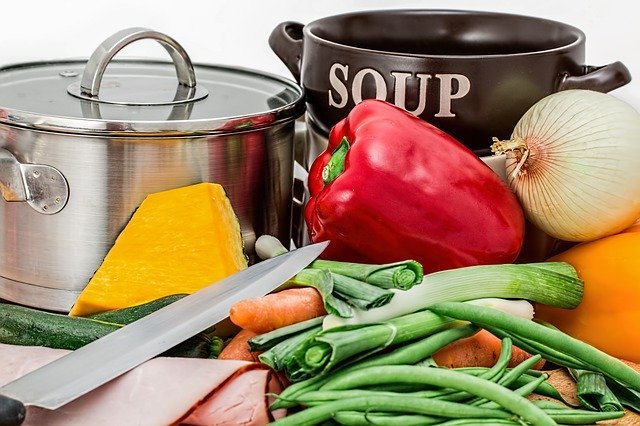Cooking for neighbours from home - Guidelines

Offering to cook a meal for a neighbour or friend during this difficult time is a very friendly thing to do. Follow our guide on how to do this safely during the Coronavirus pandemic.
There are some things you may need to think about to do this safely.
Step-by-step guide
Ask the person if they have any allergies, intolerances or dislikes and discuss with them what you plan to cook.
And then:
- Buy & use good quality fresh produce where possible. Check the dates. If using frozen food items, defrost safely in your fridge overnight.
- Ensure you have cleaned down your work surfaces and area, especially if you have pets. Wash Your Hands.
- Work with your raw meat or fish items first. Clean down and sanitise the surfaces/boards before doing anything else with them. Wash your hands.
- If the person has an allergy ensure that the food being cooked is not coming into contact with that ingredient at all, separate your work space for that meal and use utensils that have not touched that ingredient. Wash your hands.
- If the person is allergic to Gluten, you can always use cornflour to thicken sauces and mixes.
- Plan your preparation and cooking to prevent cross contamination of the food.
- Keep any food to be served cold below 8° until ready to serve. Wash your hands.
- Ensure the dish is thoroughly cooked, put a skewer in the thickest part of any meat and make sure there are no red juices coming out when you press on it. Make sure food is piping hot. Wash your hands.
- Dish up food as soon as cooked and cover with greaseproof and or foil for immediate delivery. Use a dedicated tray, this can either be left at the door or for the elderly you can go in and put it on their table provided you keep at least 2 metres distance to them, perhaps they can be in another room. Wash your hands, especially after visiting.
- Wash up any returned dishes, preferably in a dishwasher on a hot cycle, or using hot soapy water.
Guide kindly supplied by EDDC
Search
Recent Posts

Road closure information for...
Carnival Procession Night, Saturday 21st October Road Closure...

Christmas light switch on 2023
Details of the Festive Cheer event taking place on November 24th. Information...


